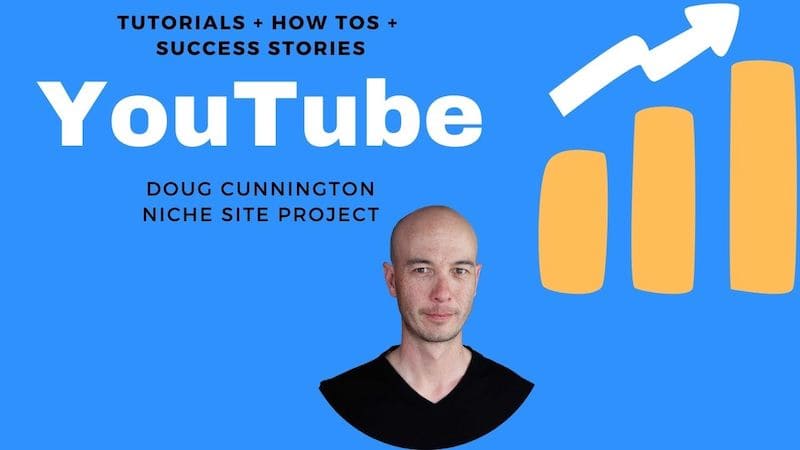Driving more traffic to your website and improving its search engine rankings are key goals for most site owners. While search engine optimization (SEO) can seem complicated to the beginner, there are three core strategies that can make a big impact: Adding new content, improving existing content, and getting more backlinks. Consistently applying these strategies takes effort, but pays dividends in the form of sustainable growth in organic traffic and visibility.
Introduction
More traffic generally means more visitors are engaging with your site content, potentially leading to more leads, customers, sales, and revenue. Higher search engine rankings help drive more of that valuable organic traffic from searches on Google, Bing, and other search engines.
There are certainly many factors that influence website traffic and search rankings, including site speed, user experience, and technical SEO optimizations. However, the underlying quality and quantity of your unique content remains one of the most important drivers of traffic and rankings. Regularly publishing new, high-quality content optimized for your target keywords demonstrates expertise and authority on your chosen topics. Updating and improving older content also keeps it relevant for search engines and visitors. Securing backlinks from reputable external websites amplifies your authority and visibility even further.
While achieving high search rankings and driving website traffic growth takes time and persistent effort, dedicating yourself to creating great content will pay off tremendously in the long run. Make adding new content, optimizing existing content, and building your backlink profile consistent priorities in your approach to search engine optimization and content marketing.
Add New Content
Posting new content frequently shows search engines that your site is active, fresh and offers value to visitors. This can improve how search bots crawl and index your site, allowing your pages to be discovered more readily. More content also allows you to rank for a greater number of relevant keyword phrases, driving more targeted organic traffic to your site over time.
Importance of Regular Posting
Adding new blog posts, videos, podcasts and other forms of content on a consistent schedule has several benefits. First, it continually gives search engines like Google new quality pages to crawl, index and potentially rank in results.
Frequent posting also helps build anticipation and engagement with visitors who will start returning to your site regularly to look for your latest updates. These returning visitors represent a steady flow of recurring organic traffic. The more quality content you publish, the faster this community of engaged visitors will grow.
From an SEO perspective, search engines favor websites that frequently add new content. Regular posting indicates your site is active, which improves your domain authority in their eyes. Active sites are rewarded with better crawling, indexing and ranking capabilities.
Keyword Research
Creating content around keywords and phrases that people are actively searching for helps ensure your content can get found in those relevant searches. Keyword research allows you to identify high-value keywords that have good monthly search volume but low competition from other sites ranking for those terms. These represent prime opportunities for new content to rank well and drive targeted organic traffic to your site.
There are a number of free keyword research tools available (such as Google’s Keyword Planner or SEMrush’s keyword tool) that allow you to identify promising keywords to target in your content and metadata. Focus on keywords that match your niche and have search volumes in the hundreds or low thousands per month. Avoid ultra competitive keywords with too many ranking domains. Targeting the “long tail” of more specific keywords is often an effective approach.
Content Variety
Different types of content can attract different audiences, so creating a variety of content expands your overall reach and appeal. Blog posts are great for sharing in-depth information and optimizing for keywords, while videos excel at demonstrations, tutorials, and training. Infographics simplify complex concepts and data in easily consumable visual formats. Podcasts allow you to engage auditory learners during their commutes.
The wider range of content you produce, the more likely you are to connect with audiences in formats they enjoy consuming. You can engage visitors on multiple levels with different mediums. Creating content in multiple formats also gives search engines more pages and content types to index, which can improve rankings.
Long-Form Content
In general, in-depth, long-form content tends to perform better for SEO while also boosting visitor engagement metrics like time on page and pages per session. For example, long-form blog posts and guides allow you to incorporate multiple related keywords throughout the post naturally, making it possible to rank for several keyword phrases with one piece of content.
Longer content also encourages visitors to stay on your site for longer periods while they consume and enjoy all your information and insights. This signals value to both visitors and search engines looking for resources they deem worth recommending. Focus on quality over quantity however – a long form piece that rambles without value is still ineffective.
Improve Existing Content
While regularly adding new, fresh content is clearly critical for SEO success, you shouldn’t neglect your existing content inventory. Revisiting and improving older blog posts, guides, videos and other content can also provide boosts by making the pages more useful for visitors and search engines alike.
Content Audit
Conduct an audit of your existing website content to identify improvement opportunities. Look for outdated posts that need updated facts, figures and information. Identify thin content that lacks depth and details that could be expanded into more robust resources. Review content with poor page speed and UX issues impacting performance. Analyze pages that rank poorly or don’t rank at all so you can enhance them with better optimization and marketing.
Software tools like SEMrush, Ahrefs, and Screaming Frog make it easy to crawl your site content and identify areas where existing content needs to be refreshed and improved for better visibility and conversion.
Update Old Posts
One of the most effective ways to reinvigorate old blog posts is to update them with new statistics, research, examples, case studies, and resources. Adding new sections with current information related to the post topic helps make the content fresh again. You can also update old posts to better match high-value target keywords and better answer common visitor questions.
Inserting new visuals like infographics, charts, and videos also makes dated posts feel more modern. By continuously making incremental improvements to existing content over time, you compound gains in visibility and conversions. Old content can continue benefiting your site for years if refreshed appropriately.
Enhance User Experience
Beyond just improving the text and media content itself, also look for ways to improve the overall user experience of your site. Enhancing your site navigation, page loading speeds, and content formatting/layout helps make content more readable and engaging. Using header tags appropriately for SEO while also breaking up text with spacers and visuals improves scanability.
Addressing site speed issues and creating a more seamless UX improves reader satisfaction while also boosting SEO. Eliminating access friction keeps visitors on site longer and signals relevance to search engines. Focusing solely on content while neglecting UX hurts performance.
Improve Page Load Speed
With the rise of mobile browsing, site speed is becoming increasingly important to both visitor experience and search rankings. Analyze page load times and identify any pages that seem to load noticeably slower than others. There are many techniques available to help accelerate slow page loads, including image compression, minifying CSS/JS files, eliminating unnecessary HTTP requests, implementing browser caching and using a content delivery network.
Optimizing individual page speed is challenging but critical for boosting conversions and rankings. Faster loading speeds lead to higher user engagement as visitors don’t get frustrated waiting for sluggish sites. Search engines are also placing more emphasis on site speed as a ranking factor.
Get More Backlinks
Backlinks from external websites related to your niche are effectively votes of confidence in your content that amplify your site’s authority on a given topic. Because of their high SEO value and power to drive referral traffic, getting quality backlinks should be a foundational priority.
Quality Over Quantity
In building a backlink profile, quality trumps quantity in the eyes of search engines. A handful of backlinks from highly authoritative, relevant industry websites are exponentially more valuable than a greater number of links from minor pages with low domain authority. Focus your efforts on building a modest profile of high-quality backlinks rather than pursuing a massive volume of insignificant links from spammy sites.
Guest Blogging
One effective way to earn high-quality backlinks is by guest posting on reputable blogs and websites in your industry. Reaching out to site owners and offering to contribute a post allows you to secure backlinks in your author bio back to your site. Make sure any guest posts are high quality and a good fit for the target site’s audience.
Guest blogging works best when you build relationships with site owners and contribute more than just a single post. Producing ongoing value earns their trust and expands your backlink opportunities. But getting even one guest post on a popular site in your niche can be a major ranking boost.
Create Link-Worthy Content
Since getting links always works best when earned naturally, you should focus on producing truly unique, useful, compelling content that readers will want to share and reference. Think about what content could get attention in your industry or elicit links from other authoritative sites. Promoting any high-quality content that has potential to attract links can help build your profile.
Types of link-worthy content can include:
- Industry studies with original data
- Comprehensive guides, ebooks or tools
- Exclusive interviews with influencers
- Breaking news and analysis
- Visual data presentations (infographics, charts)
- Innovative research, strategies or findings
Publishing content that shows insights others will find worth referencing makes it more likely to get linked to naturally. Create resources worthy of being linked to rather than trying to beg for links through outreach alone.
Active Promotion
While earning links organically is ideal, you can supplement high-quality content by actively promoting it through social media, outreach to journalists/bloggers, and community engagement. Share your content in relevant Facebook Groups, Reddit threads and forums. Distributing it through your email newsletter and social channels expands reach. Contacting websites directly about relevant pieces can yield placements.
Promoting your best content effectively helps get it in front of the audiences most likely to link to it. An active promotion strategy paired with link-worthy content results in the most powerful backlink profile.
Conclusion
Growing levels of website traffic and improved search engine rankings are foundational goals for most online businesses. While SEO success requires patience and effort, sticking to a few core strategies can yield tremendous benefits. Regularly adding fresh, high-quality content optimized for target keywords demonstrates your expertise to search engines while providing value to visitors. Ensuring existing content stays updated and well-optimized also keeps it useful. Securing authoritative backlinks from trusted external sites amplifies your site’s visibility and authority.
Executing on content creation, optimization and promotion generates results over time. Consistency is key – establishing sustainable content creation and promotion processes matters more than temporary surges. There are rarely quick SEO wins, but diligently sticking to a plan yields compounding returns. With a balanced approach to content, UX and backlink building, your site traffic and rankings can steadily ascend.



